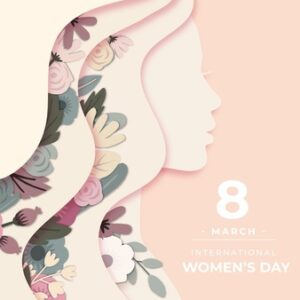Imagine a gender-equal world;
A world free of bias, stereotypes, and discrimination;
A world that is diverse, equitable, and inclusive;
A world where difference is valued and celebrated
Together we can forge women’s equality;
Collectively we can all Break The Bias.
This is the 2022 slogan of International Women’s Day.
But what are the historical backgrounds of this day?
What are legal instruments in support of this day?
Also if you are interested in Gender Bias in legal professions, read the article below:
Gender Bias in the Legal Professions
March 8th: Historical Background
International Women’s Day or as it abbreviated IWD, is a global holiday celebrated annually on March 8 to commemorate the cultural, political, and socioeconomic achievements of women. It is also a focal point in the women’s rights movement, bringing attention to issues such as gender equality, reproductive rights, and violence and abuse against women.
Spurred on by the universal female suffrage movement that had begun in New Zealand, IWD originated from labor movements in North America and Europe during the early 20th century. The earliest version was purportedly a “Women’s Day” organized by the Socialist Party of America in New York City on February 28, 1909.
This historical overview fits within the category of Lawyer Guides & Professional Growth, as understanding the roots of social movements can provide valuable context for legal professionals engaged in gender equality and labor rights advocacy. The inspiration from this event led German delegates at the 1910 International Socialist Women’s Conference to propose “a special Women’s Day” be organized annually, albeit with no set date; the following year saw the first demonstrations and commemorations of International Women’s Day across Europe.
After women gained suffrage in Soviet Russia in 1917 (the beginning of the February Revolution), IWD was made a national holiday on March 8; it was subsequently celebrated on that date by the socialist movement and communist countries. The holiday was associated with far-left movements and governments until its adoption by the global feminist movement in the late 1960s. IWD became a mainstream global holiday following its adoption by the United Nations in 1977.
Unfortunately, accordingly to statistics:
According to the reports published by UN’s website:
- “In 18 countries, husbands can legally prevent their wives from working; in 39 countries, daughters and sons do not have equal inheritance rights; and 49 countries lack laws protecting women from domestic violence.
- One in five women and girls, including 19 per cent of women and girls aged 15 to 49, have experienced physical and/or sexual violence by an intimate partner within the last 12 months. Yet, 49 countries have no laws that specifically protect women from such violence.
- While women have made important inroads into political office across the world, their representation in national parliaments at 23.7 percent is still far from parity.
- In 46 countries, women now hold more than 30 percent of seats in national parliament in at least one chamber.
What Are Legal Instruments in Support of this Claim?
The right to equality of enjoyment of all rights between men and women is mentioned in the International Covenant on Civil and Political Rights and the International Covenant on Economic, Social, and Cultural Rights. Most European countries and all European Union member states have adopted gender equality laws following the ratification of the Convention on the Elimination of All Forms of Discrimination Against Women (CEDAW). What is more, the EU and UN have commenced an insightful initiative to eliminate all forms of violence against women and girls (VAWG). The initiative is considered to be in conformity with the 2030 Agenda for Sustainable Development.
In the context of arbitration, ArbitralWomen is an international non-governmental organization and an important hub for promoting women practitioners in dispute resolution. The Equal Representation in Arbitration (ERA) Pledge was launched in London. As Mirèze Philippe, the ArbitralWomen co-founder, stated in her article:
“The Pledge is a call to the international dispute resolution community to commit to increasing the number of female arbitrators on an equal opportunity basis.”
Mirèze Philippe
What can be made out of this?
To sum up, in order to properly ensure women’s rights, the relevant laws and policies should be amended considering the real-life facts, economic, political, and social frameworks of jurisdictions. Each law and policy should be considered in relation to the nation’s cultural framework to establish a correct and accurate legal basis. Basically, Gender Equality is having the same choices, opportunities, and values.
The 8th of March marks a call to action for women empowerment by breaking the barriers. Happy International Women’s day!

LegaMart is a global legal platform designed to connect individuals, startups, and businesses with qualified lawyers across jurisdictions. With a mission to simplify cross-border legal services, LegaMart provides users with access to a diverse network of vetted legal professionals who specialize in areas such as international law, corporate law, immigration, dispute resolution, and more.
By leveraging technology and user-friendly tools, LegaMart allows clients to search for lawyers by country, language, or legal expertise, submit their legal queries, and receive tailored legal solutions in a streamlined, efficient manner. The platform serves as a bridge between legal professionals and clients who need multilingual, multi-jurisdictional support — especially in today’s increasingly globalized legal landscape.
Whether you’re an entrepreneur launching a business abroad, an individual dealing with immigration paperwork, or a company navigating cross-border compliance, LegaMart aims to make legal help more accessible, transparent, and collaborative.




